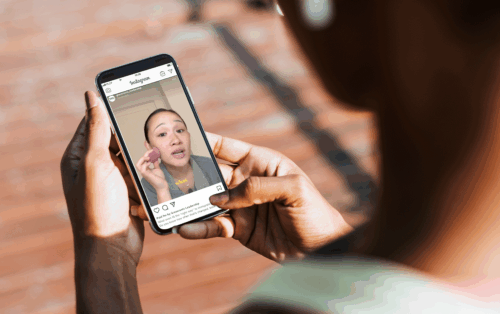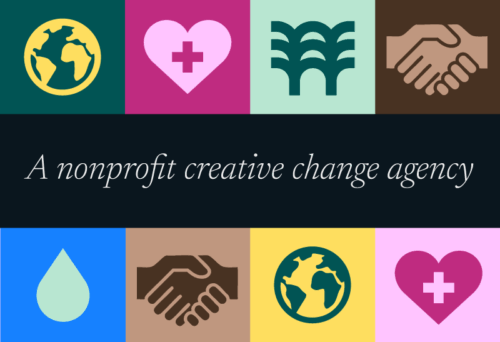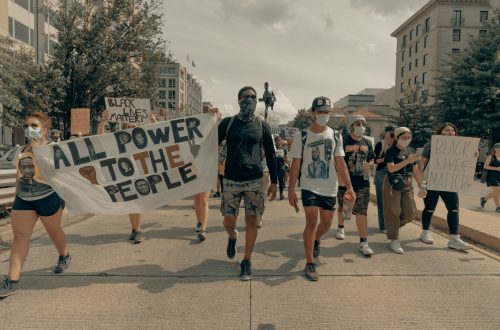
Racism is woven into every aspect of American life, and the last three months in particular have underscored, once again, the insidious power of racism to harm. With these recent and ongoing crises, we recognize the intersectionality of oppression and the need to build collective power to build narratives and partnerships that fight back.
We’ve written before on this blog about the power of narrative: that we operate amidst narratives so entrenched they are hard to see–like the myth that individual responsibility solely determines one’s fate in life. We’ve explored how powerful narratives prescribe what we see and don’t see and how we perceive both the challenges at hand and array of possible solutions.
Consider the power of our narratives around racism in the Asian American experience. Because of the model minority myth and other harmful systems reinforced by white supremacy and those in power, some in our country don’t “see” racism against Asian Americans the way other kinds of racism are perceived. Even with the rise in violence against Asian Americans in the wake of COVID and the horrific mass shooting in Atlanta, many still refuse to see or acknowledge the problem. This gaslighting (the act of undermining another’s reality by denying the facts or environment around them) compounds the terrible harm and trauma that our Asian American colleagues, friends, neighbors and family members experience on a daily basis.
Along with having the power to harm, narrative can be a powerful tool to change systems.
Consider the unyielding work of Black organizers and allies in the wake of George Floyd’s murder last summer. Thanks to their tireless work and the dedication of hundreds of thousands of people around the country, the narrative about racism in America has shifted, and with a new conversation comes a new kind of power. A jury’s unanimous ruling in April that Derek Chauvin was guilty on all counts isn’t just about the legal merits of the case, it speaks to a change in shared understanding, especially as Chauvin is believed to be only the second officer to be convicted in an on-duty death case in Minnesota’s history. The jury’s ability to “see” a police officer’s guilt is part of the narrative shift we’ve seen.
During moments when it seems we are inching closer towards accountability and justice, there are abundant opportunities for continued cross-racial understanding and learning. At Resource Media, we recently held a virtual all-staff retreat, which was a moment to reconnect with each other and share our hopes for the future. As a team, we talked about the need for cross-racial solidarity as essential for protection of all communities. This spirit is necessary as we witness ever-more ways that broader systemic oppression impacts so many people in the United States. Amidst the Chauvin trial, Chicago police killed 13-year-old Adam Toledo; the day before the Chauvin ruling was handed down, police pressed the life out of an unarmed Mario Gonzalez in California, who was sole caretaker of his mother and brothers with autism. As the ruling was being handed down, police shot 16-year-old Ma’Khia Bryant in Minneapolis. There are unrelenting acts of trauma and violence occurring while migrant families are still being held in detention at the U.S. southern border. Native and indigenous women, girls and two-spirit people continue to face murder and malice, which was commemorated on May 5th, the National Day of Awareness for MMIWG2S.
It’s essential to not see these as a never-ending list of examples of interconnected racism and oppression, but to examine the systemic causes of these issues and build narratives, partnerships and systems that forge a new path of unity, solidarity and resource-sharing, while also forging narratives that imagine a better future.
We have collectively made progress and begun to reshape the conversation on racism, but as ongoing violence against Black, Indigenous, and people of color demonstrates, there is so much more work yet to do. At Resource Media, we understand that all oppression is connected and that building power to dismantle oppression is about many things, including organizing, legislative and legal strategies. But it’s also about visibility and elevating and amplifying stories and voices to win hearts and minds and pressure the powerful. To build a different world, we have to see a different world, and that means the stories we tell ourselves need to change. We have the gift and responsibility to work in tandem across communities to rewrite the narrative and speak truth to power.
— Resource Media Staff
Originally published May 27, 2021.
More Insights and Resources


Rooted in who we are: Check out our new look and website

